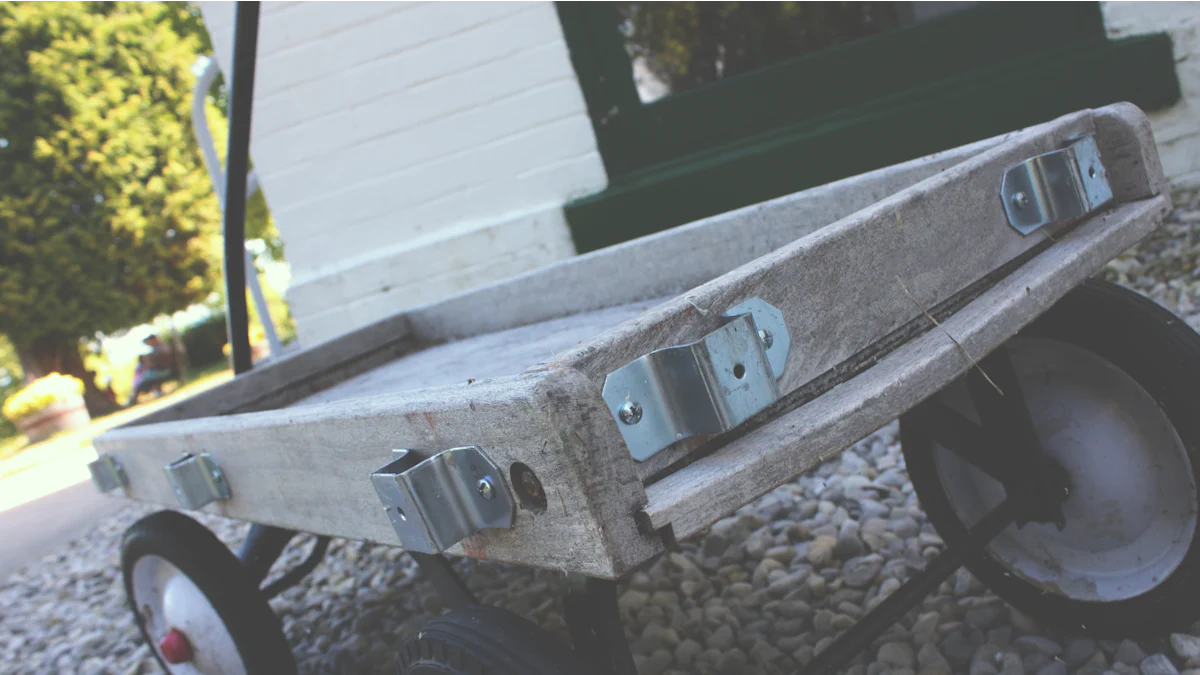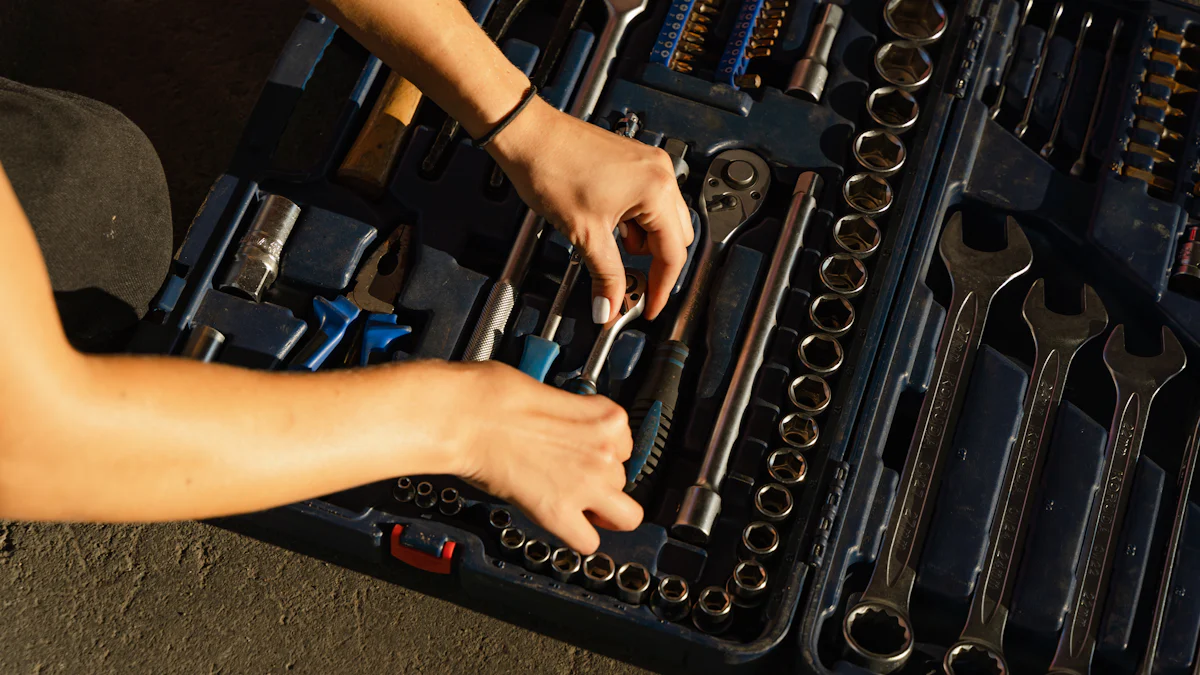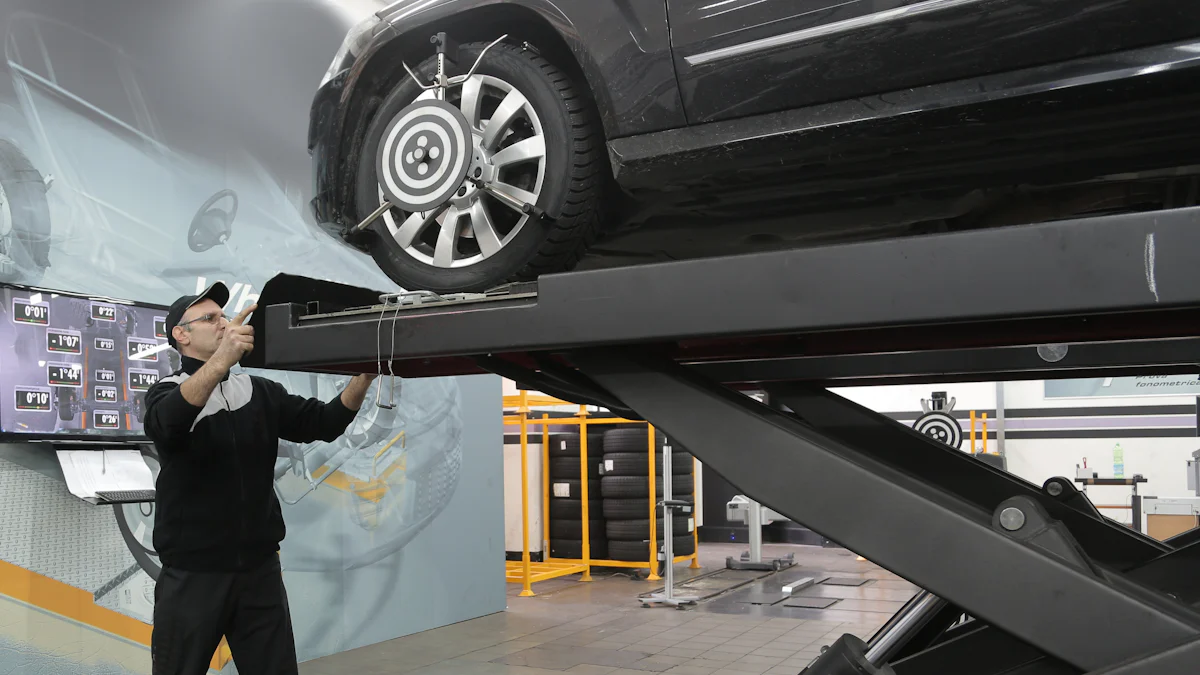
Maintaining pallet jacks is crucial to ensure their proper functioning and longevity. Regular maintenance tasks, such as lubricating moving parts and inspecting wheels, play a significant role in preventing unexpected issues. By replacing replacement wheels for pallet jack regularly, you can enhance the equipment’s performance and safety. In this guide, we will walk you through the process of replacing wheels step by step, providing you with the knowledge needed to keep your pallet jack in optimal condition.
Tools and Preparation

Necessary Tools
To begin the process of replacing replacement wheels for pallet jack, several necessary tools are essential. A hammer is required to assist in dislodging components, while a pin punch aids in removing stubborn pins. Additionally, grease is crucial for lubricating parts during the replacement process. An old cloth or rag can be handy for cleaning and wiping down surfaces to ensure smooth operation.
Safety Precautions
Prioritizing safety is paramount when undertaking any maintenance task involving a pallet jack. Securing the pallet jack in place before initiating the wheel replacement is crucial. This can be achieved by utilizing appropriate equipment to prevent any unexpected movement during the process. Furthermore, wearing protective gear such as gloves and goggles is highly recommended to safeguard against potential hazards that may arise.
Replacement Wheels for Pallet Jack
When considering replacement wheels for pallet jack, it is vital to choose the right ones suitable for your specific model. Ensuring compatibility with your pallet jack will guarantee optimal performance and longevity of the new wheels. You can acquire these replacement wheels from reputable suppliers who specialize in providing high-quality components for various industrial equipment.
By following these guidelines and adequately preparing with the necessary tools and safety measures, you can efficiently replace the wheels on your pallet jack without encountering any complications.
Removing Old Wheels
When it comes to removing old wheels from a pallet jack, following a systematic approach is essential to ensure a smooth transition to the new components. The process begins with flipping the pallet jack, a maneuver that allows easy access to the underside of the equipment for wheel removal. This step involves positioning the jack in a stable manner to prevent any accidental movements during the operation. By ensuring stability, the risk of mishaps or injuries is significantly reduced.
Next, attention shifts towards removing the tension pins that secure the axle and wheels in place. Utilizing tools such as a hammer and pin punch facilitates this task by providing the necessary force to dislodge stubborn pins. By carefully extracting the pins, one can proceed to detach the old wheels without causing damage to other components of the pallet jack.
With the tension pins successfully removed, it’s time to focus on sliding off the old wheels from their axles. This step involves delicately removing the axle from its housing, allowing for easy access to each wheel. By gently taking off the wheels, one ensures that no unnecessary strain is exerted on surrounding parts, minimizing the risk of potential damage.
Installing New Wheels

Lubricating the Parts
Installing new wheels on a pallet jack involves lubricating the parts to ensure smooth operation and longevity. By applying grease to the necessary components, you can reduce friction and enhance the overall performance of the equipment. This step is crucial in maintaining the efficiency of the pallet jack during daily operations.
Attaching the New Wheels
When attaching the new wheels, it is essential to pay attention to detail to guarantee a secure fit. Begin by positioning the wheels correctly on the axles, aligning them with precision to prevent any misalignment issues. By carefully inserting the axle through each wheel, you can establish a stable connection that promotes optimal functionality.
Securing the Tension Pins
To complete the installation process, securing the tension pins is vital for ensuring stability and safety. By hammering in the pins with precision, you can firmly secure the axles in place, preventing any potential dislodgment during usage. After securing the pins, it is recommended to thoroughly inspect the pallet jack for any signs of instability or loose components.
By following these steps meticulously and paying attention to detail, you can successfully install new wheels on your pallet jack, enhancing its performance and reliability for future use. Remember that proper maintenance practices are key to maximizing the lifespan of your equipment and ensuring safe operational procedures at all times.
- Implementing regular maintenance tasks is crucial to ensure the longevity, safety, and optimal performance of hand pallet jacks. By conducting routine maintenance, you can prevent costly repairs, minimize downtime, and extend the lifespan of your equipment.
- Proper maintenance not only prevents unexpected breakdowns but also saves time and money in the long run by identifying repairs before they escalate. Regular servicing helps preserve operational efficiency and lifespan by addressing minor issues before they become major problems.
- Scheduled maintenance is essential for maintaining the safety, performance, and longevity of pallet jacks/trucks. It can prevent accidents, injuries, and costly damage to the equipment. By prioritizing preventive maintenance now, you can increase productivity and ensure safe operations daily.
Post time: Jun-14-2024
